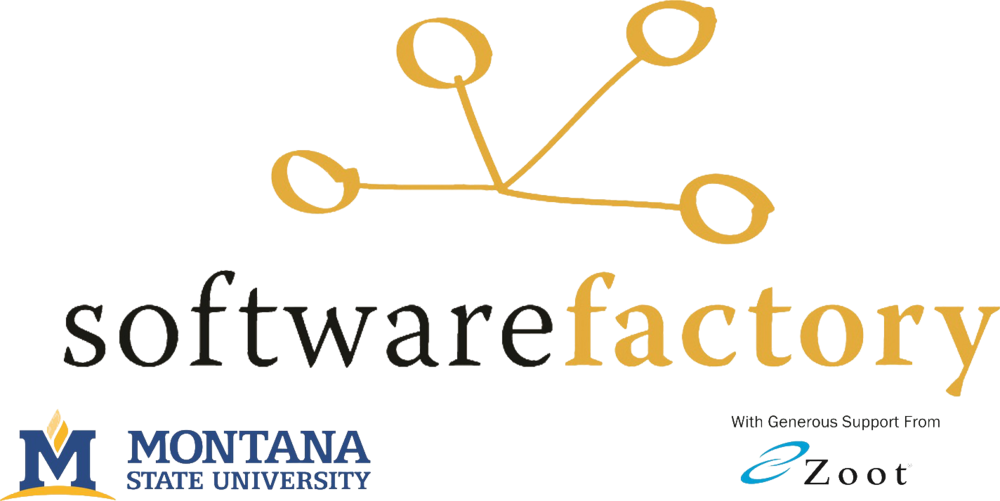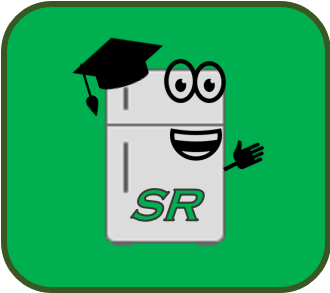The Zoot Monitor is a project that uses the ELK stack technology to analyze and visualize customer systems. Elasticsearch is used for data analytics, Logstash is used for centralized logging and parsing, and Kibana is used for powerful and beautiful data visualizations. By using all three technologies combined, we have a powerful suite of technologies that help provide deep insights to proactively help troubleshoot issues before they turn into problems.
The project at Golden Helix involves students working on a dashboard to displayed detailed gene sequencing information
Story Squares is an application that aims to improve writing skills of elementary schools children by helping organize their thought and ideas using a modular and intuitive design
Workiva is developing a project that uses machine learning to train an algorithm to take input graph data and produces a process flow graph that is human readable
Blackmore is a project where students are developing virtual reality techniques to visualize laser data using an Occulus device
Algorithm Animation is a project where Bozeman High students have paired up with two undergraduate CS students to produce an Android application that animates various sorting algorithms. The goal is to use this application to teach a difficult topic through visualization.
Spectrum Analyzer is a project in which four students will work to develop an extensible architecture for the Extreme Bandwidth Analyzer and Correlator. Signals are processed and visualized to provide amplitude and frequency information.
PrintingForLess - Students will work on-site with professional development engineers at PFL to develop state of the art web based printing solutions
Nutrition Monitor
NuMo is a nutrition tracking mobile application that focuses on important metrics regarding Omega 3s and Omega 6s.
ShareLift is developing mobile apps to help skiers share rides to the slopes!
Blueprints
Blueprints for Student Success is a project concerned with understanding the questions that high school students may have when transitioning to college. The Software Factory is concerned with developing a game like application to help with this process
Hewlett Packard
HP Remote Graphics Software (http://www8.hp.com/us/en/workstations/remote-graphics-software.html)
Access, share, and broadcast your Windows and Linux® workstation apps in amazing, high-speed clarity from any remote PC, Mac®*, or Windows tablet with HP Remote Graphics Software (RGS), built from the ground up with HP’s workstation expertise.1
HP RGS 7 brings an all new HP Velocity status bar and controls, greater collaboration control, Windows 10 touch and tablet features, native Wacom pen tablet redirection on Linux®, improved Linux® audio, a new user interface for admins to customize RGS deployments, and more.
Our students will be working with HP engineers to help test and monitor performance of HP's RGS solutions
Cowboy Crickets
A group of four students will develop an initial solution for the cricket farm to help deploy an infrastructure to help monitor various variables associated with the habitat of farmed crickets. Such variables include things like temperature, moisture, etc. The results of these monitored values will be tracked longitudinally through the use of a dashboard.
MREDI Precision Agriculture
The precision agriculture project is focusing on the development of quality assurance techniques for software code. Two students from our NSF REU funded project in 2017 will continue their work to find ways to extract technical debt measurements from source code quality and apply it to precision agriculture software. The focus will be on detecting software security vulnerabilities.
The Compassion Project in Montana
The Compassion Project (TCP), a non-partisan, non-religious organization and project, is designed to bring the Bozeman community and the greater Gallatin County together through education in and outside the schools around compassion- what it means, how to recognize it, how to practice it, and why it is important. Upon completion of these school and community lessons and workshops, each participant will receive a donated 8x8in wooden block to create their own artistic representation of compassion based on what they learned. The final output of this project will be an installation of all art pieces (~10,000 pieces) around Bozeman in the spring of 2019. It is the hope that this will then be expanded to other communities around Montana and beyond.
Monitoring Security Vulnerabilities (Hoplite)
Software vulnerabilities can be exploited by sophisticated attacks. In this project you will work with highly trained professionals to learn how to defend organizations against cyber attacks.
Design and implement an application for gathering data on students’ engagement as part of a research project on students’ engagement in undergraduate mathematics classrooms. Traditionally, data collected on student engagement stems from teacher reports and researcher observations. Arguably, these methods do not accurately document students’ experiences in learning mathematics, and have contributed to institutional racism and myths such as “boys are more interested in mathematics than girls” or “students with Asian heritage are stronger in mathematics.” New methods for data collection, such as the one sought after here, will:
· Position students as the authority of their own experiences,
· More accurately document student engagement and its role in learning mathematics, and
· Contribute to making mathematics classrooms more equitable and accessible.
On the surface, the software should function as a note taking application, where users are assigned roles as researchers, teachers, or students. Researchers should be able to add survey questions, designate random times for administering surveys to students, and download data for analysis. Teachers should be able to use the software as part of their regular teaching routine. Students should be able to reliably take notes and answer survey questions from researchers with minimal intrusion to their learning.
Smart Recipe App (startup Kaitlin Lane)
This is a startup idea that will help you develop your skills with mobile computing environments while engineering a Blackstone sponsored project. This app will help generate recipes from the items that the user scans into the app. You will need to code QR codes and link your items to a cloud based database. From there, the user will have options to filter recipes by selecting a time frame, dietary restrictions, or cuisine. I hope that you come ready to learn more about my idea because I think it is just what college students, like us, need!
Masons and Geometries (Basecamp Construction)
There are many types of masonry, such as brickwork, full stone, and thin stone veneer. Furthermore, when working with stones, they can be ashlar (squared/cubed stone) or mosaic (unworked, randomly shaped stone), or within the continuum between these 2 extremes. This project involves attempting to drastically reduce the time needed to do thin stone veneer with stones that are on the more randomly shaped half of the spectrum. When doing mosaic style masonry, as much as half of a mason’s time is spent simply finding, and often cutting, the correct stone in order to fit well into the next open space or pocket on the surface. Looking through hundreds of stones laid out on the floor and identifying one that will fit a pocket created by previously set stones is not, it seems to me, a problem for which the human mind is well-suited.
The goal is to create an algorithm which will take as its inputs pictures of hundreds of stones, as well as pictures of the space to be filled, and output a solution which will both find stones which naturally fit well together, as well as identify and minimize the amount of cuts needed to complete the project. Ideally the solution would be ‘projected’ onto the wall or surface to be covered in stone via an augmented reality glasses unit. These glasses will also show where to cut a particular rock when cuts are required, and highlight the next stone to place from the unplaced stones remaining on the floor for easy retrieval.
While this algorithm uses mathematics at its core to solve this rather complicated puzzle, it turns out that the actual math involved is not particularly difficult, requiring only geometry, trigonometry, and basic vector arithmetic. Basecamp already worked out the basic conceptual roadmap needed to solve this puzzle, and found so far that it revolves more around creating the correct logical paradigm and keeping large amounts of information organized than requiring high end mathematics. We intend to keep working out the algorithm in more detail, and working with software engineers throughout the process to solve for important variables, such that they can focus on design and implementing the algorithm rather than having to work just on the research aspects.
The Recreational Aviation Foundation (The RAF), is a 501c3 non-profit, based in Bozeman, MT, and has approximately 10,000 members/supporters across the US. The mission of the RAF is to preserve, improve and create airstrips with recreational value on behalf of the 500,000 general aviation pilots in the US. This includes airstrips on public lands, such as the US Forest Service and BLM, as well as airstrips on private property. These airstrips are most often referred to as backcountry airstrips. Part of the challenge for the RAF is to make pilots aware of these airstrips and provide information on how to land at them safely.
ForeFlight currently provides a tool called “Content Pack” as a means of importing information into the ForeFlight app. This requires the pilot to go through several steps to successfully upload. We would like to create a utility within the Airfield Guide that would automate the creation and transport of a content pack into ForeFlight. This would include a user interface and access to an SQL database to assemble the data that would then be formatted for a content pack upload.





















